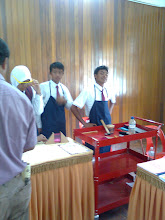Oh kekasih mu ini akan merasa gembira ,
andai dapat bersama untuk selama-lamanya ,
hanya untuk menyangimu...,
hanya untuk bercinta lagi.....
Andai enkau berduka ,
aku yang pertama disisi ,
andai engkau bahagia akukan terus...
berdoa semoga ,
suatu masa.....
pintu hatimu kan terbuka...
dan bila kau menghilang....
musnahlah musnah impian....
tuk menggapai bintang ,
terangi hidupku....
ku mahu kau tahu ,
engkaulah destinasi ku....
dalam ingatan ku...
oh..ohh.oohh.ooh.oooh..ooooooh
oooooooooooooooohhhhhhhhh,,,,,,
bagaikan permata dicelahan kaca ,
kedipnya sukar tuk dibezakan ,
kepada-Mu tuhan...
ku sandar harapan...
moga tak tersalah pilihan...
nur kasih Mu mendamai di kalbu ,
jernih setulus tadahan doaku ,
rahmati daku dan permintaanku ,
untuk bertemu di dalam restu……
kurniakan daku serikandi ,
penyejuk di mata penawar di hati ,
di dunia dialah penyeri ,
di syurga menanti dia bidadari……
kekasih sejati teman yang berbudi ,
kasihnya bukan keterpaksaan ,
bukan jua kerana dunia ,
mekar hidup disirami nur kasih……
aku kembali kerana masih….
mencari yang hakiki ,
sinar yang pasti….
janji suci yang abadi……
ooo kasih…
nur kasih…
oh nur kasih…
nur kasih…
inilah janjiku ,
insan yang mengenal erti……..
sepi yang tiada sepi…..
sepi lagi…..
tinggal kau harapan ,
satu-satunya sandaran ,
jalan ku pulang ke jalan yang TERANG…………
Seri, aku merayu….
pada kau yang bernama Seri












